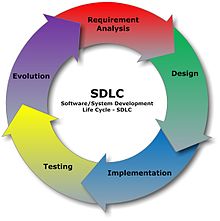THE ISSUE
Gaming industry has grown in harmony with computing. Faster and more powerful computers and advanced game programming technologies have contributed to set the computer gaming industry as a strong component of the entertainment world. There is a concern with what game themes have become. Today, games are more and more abstract, violent and sometimes with some immoral values attached to them.
I find interesting to analyze what can be done to,let’s say it, make games more ethical. I came across this article which quite sets the problem for debate. I can relate this issue to Principle 1.05 of the Software Engineering code of ethics. The principle is as follows: “Cooperate in efforts to address matters of grave public concern caused by software, its installation, maintenance, support or documentation.”
ANALYSIS
The main concerns about video games are their addictive nature, their themes (whether they are suitable for a young audience or not) and the fact that they draw they game junkie slowly away from reality. There was a time when video games were free and with the only purpose to be entertaining. Now it is a multi billion dollars business. The software development community can surely do something about the bad influence of video games (they are the one developing them). Supporting that idea, Mark Zukerberg creator of Facebook, after purchasing the major virtual reality goggles maker Oculus, suggested a future direction for video gaming by making virtual reality for empathic and closer to reality
When technology starts to digress from its original purpose, it is the responsability of the professionals of the fields to do something about it and try to fix it as stated in the Principle 1.05 of the software engineering code of ethics.
CAN SOMETHING REALLY BE DONE ABOUT IT?
Video games can’t be banned. Their themes and content can’t really be controlled either. The truth is they are out there and every individual has the freedom to decide to be caught in the loop or not. We need also to look at the artistic part of the problem. Is there a code for defining the content of a game? What is it to be too virtual? By how much? Even if a major player comes and capture the whole gaming industry, he is still going to need to diversify. Besides, game developers do not forcedly write the storyline or draw the pictures that animate games. They just write code. They are not fully responsible if games are addictive or are drawing people out of reality. Fixing that issue cannot come entirely from software development community.
MY OPINION
I think developers can’t control what’s going on in the gaming industry. There are bigger stakeholders that have more decision powers. Developers are employees pursuing a career. Game developing companies might have a higher impact. Are they ready to lose billions of dollars over ethical concerns? Unless turning gaming into something that can generate at least the same amount of money, it’s not going to happen.
Advances in computing and in software development technologies benefit many business areas. Video games are one of them. Now the issues brought along by the negative effects of video games are out of the hands of the software development community…for now. This can change, if a major player starts to set a trend that can sell. That is another story.
And you, do you think the software engineering community MUST try and fix all the negative impacts of “too much” computing?










